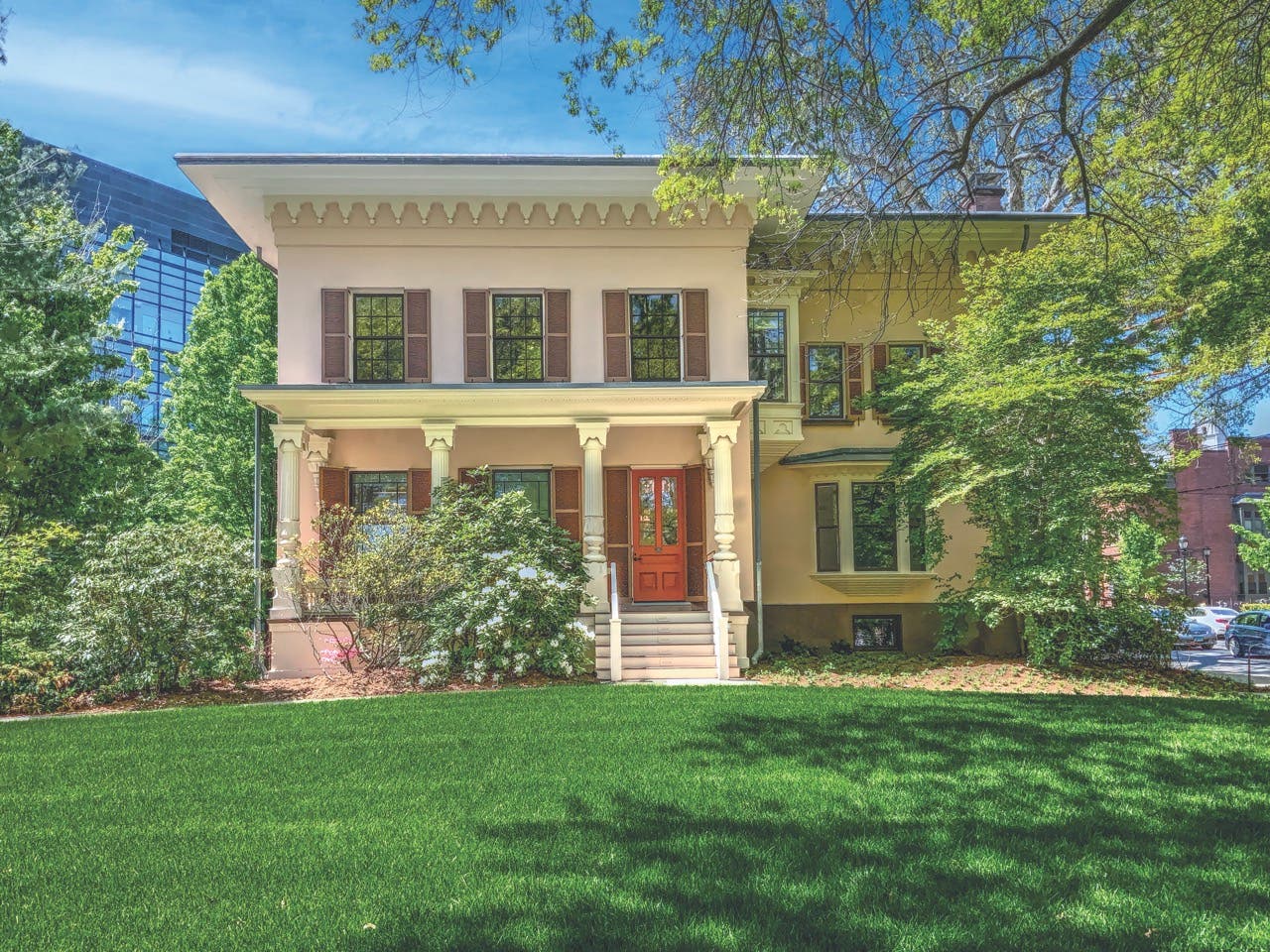
Product Reports
Artisans and craftsmen who are making ironwork alive today.
Traditional ironwork designs, in production for generations, are as fresh as the day they were forged by hammer and anvil by the village blacksmith. Here are some of the artisans and craftsmen who are making their mark on history by recreating old pieces and creating their own traditional and custom works for a variety of design professionals.
Compass Ironworks compassironworks.com
Established in 1998, Compass Ironworks is a third-generation family-owned and -operated shop that collaborates with designers, architects, and other clients to create custom-crafted ornamental works, notably gates, fences, railings, and stairs.
“We design and engineer from scratch, pulling from over a century of collective metal-working experience,” says President Amos Glick. “We use the millennial method of fire, hammer, and anvil to hand-forge specifically crafted metal works of art to emulate yesteryear’s masterpieces.”
The 12-employee Pennsylvania-based company is green: Off the grid, it creates its own power, and its powder-coated finish is eco-friendly. And it fabricates custom ornamentation in steel as well as solid-grade aluminum, stainless steel, bronze, brass, and other metals that typically are not handled by other iron shops.
“We have a library of books featuring the work of past masters,” Glick says, adding that Compass Ironworks also refurbishes vintage pieces. “It inspires us to incorporate techniques to elevate each client’s exceptional project from ordinary to extraordinary.”
Historical Arts & Casting historicalarts.com
Since 1973, Historical Arts & Casting has been creating custom architectural and ornamental ironwork ranging from cast-iron storefronts and clock cases to intricate railings and roof crestings.
The 33-employee company, which is based in West Jordan, Utah, has worked on a number of high-profile architectural jewels around the country, including the dome of the United States Capitol, Manhattan’s Central Park, and Columbia University.
“The variety of products we make, our ability to do it all in house, and the level of detail and attention we add to it separate us from other producers of architectural iron,” says Partner David Teague.
The designs, forged via a combination of older tools and techniques and modern ones, are inspired by historical examples and the ideas of the design professionals who commission them.
Historical Arts & Casting is proud to be one of the firms keeping the craft of ironwork alive, Teague says, because “it represents collective memory—a cultural heritage. What and who have come before us, what was done and how it was accomplished, the good and the bad, are the foundation for what we are today.”
He notes that it’s important to “allow tradition to evolve organically through the input of others along the way.”
James DeMartis Metal Studio jamesdemartis.com
Pairing traditional blacksmithing techniques with modern fabrication methods such as welding and machining, James DeMartis creates commissioned, site-specific custom pieces ranging from furniture and lighting to sculpture, and also restores and repairs antique ironwork.
“My projects are widely varied and limited only by imagination,” says DeMartis, who established his eponymous shop in 2001 on Long Island’s East End. “My works are defined by hand-applied patina finishes, heightened attention to detail, personal artistry, fluid interaction with my clients, my love of collaborating, and a perfectionist’s eye for the highest standard of craftsmanship.”
Although most of his work is for private residences, he has done projects for the New York Botanical Garden in the Bronx. He also restored the canon on the war memorial in the Village of East Hampton, New York, and the historic wrought-iron anchor from the shipwrecked schooner Nahum Chapin that stands in front of the Quogue Library in the New York village of the same name.
DeMartis, who crafts his pieces with vintage tools he has collected from antiques shops, yard sales, and tailgate vendors, loves taking on challenging projects and making beautiful, one-of-a-kind objects.
“Where better,” he says, “to see the marvels of creation than in the hands of an artist or craftsman such as myself, who uses simple tools to satisfy a need with creativity, engineering, intellect, and expertise.”
Robinson Iron Corp. robinsoniron.com
Specializing in the restoration and reproduction of vintage ironwork as well as the creation of custom products, Robinson Iron, which has done projects all over the country, is best known for the new and restored fountains that define the town squares of a number of historic cities, notably Savannah, Georgia; Henderson, Kentucky; Toronto; Mobile, Alabama; and Chicago.
The family-owned and -operated company, based in Alexander City, Alabama, was established in 1973 as a spinoff of Robinson Foundry, which was started in 1946 by Joe Robinson Sr.
“He began acquiring patterns from historic foundries like J.L. Mott and J.W. Fiske almost as a hobby,” says Luke Robinson, his grandson and the sales and marketing director of the company. “It’s this vast pattern collection, along with our experience working with unique projects and clients, that set us apart.”
The company, which has a pattern shop and CAD department, typically works with architects to create bespoke items but also draws from its catalogs of traditional and historic patterns. “Pieces can be recreated using an original casting in existence and sent to us by the client or scanned by our team,” Robinson says. “Or, short of having an original, we can use old drawings, pictures, postcards, or other items to make a pattern from scratch.”
Robinson says that he, his father, Ricky, his brother Austin, and the company’s 30 employees are proud of the part they play in keeping history alive.
“Iron is a wonderful material to work with and has so much history and character,” he says. “It’s strong and resilient and a huge part of American and worldwide construction and art. It’s wonderful to restore a fountain originally made in the early 1900s and watch the community become reinvigorated by its charm and beauty.”









